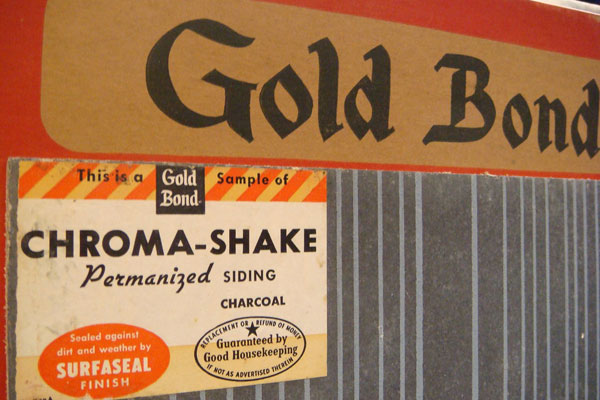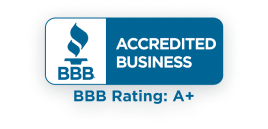
Sean Fitzgerald, PG, is a research geologist specializing in asbestos environmental studies.
Gold Bond is a brand of construction products that once contained asbestos. Asbestos litigation forced Gold Bond and its parent company, National Gypsum, to file for bankruptcy in 1990. A trust fund was established with $347 million to handle asbestos claims.

The National Gypsum and Gold Bond Building Products joined the Wellington Agreement, an industrywide settlement between asbestos manufacturers and their insurers, in 1985. The agreement created the National Claims Facility, which handled claims for 3 years before closing.
By 1990, asbestos claims had grown too large, and National Gypsum filed for Chapter 11 bankruptcy. In 1993, the company reorganized into “New National Gypsum,” which acquired the Gold Bond division, and “Old National Gypsum,” which retained the asbestos liabilities and formed the Asbestos Claims Management Corporation to manage claims. The National Gypsum Corporation Settlement Trust handled asbestos-related claims during this time.
Gold Bond Trust Fund Updates
On August 6, 2003, the National Gypsum Company Bodily Injury Trust was established to handle future asbestos claims. As of 2025, the asbestos trust fund remains active, processing claims from people exposed to Gold Bond and other National Gypsum products. As with other asbestos trust funds, people submit claims through the trust instead of filing lawsuits against the company. A lawyer can help determine eligibility and guide the claims process.
If you’ve been exposed to Gold Bond asbestos products and developed an asbestos-related disease, you may be eligible to file a claim with the National Gypsum Company Bodily Injury Trust fund. Experienced mesothelioma attorneys can guide you through the claims process to secure compensation for medical bills and lost income.
Legal representation is important to understand your rights, meet the filing deadline and to navigate the complex documentation requirements of the trust. Choosing the right lawyer for you and your family can feel daunting, but Patient Advocates can connect you with professionals experienced in claims like yours. They can also assess if there are other avenues of financial assistance open to you.

Gain access to trust funds, grants and other forms of compensation for you or your loved ones.
Get Help NowWorkers and others who handled Gold Bond products developed mesothelioma and other serious diseases and began pursuing asbestos lawsuits in the 1970s. They named National Gypsum and Gold Bond Building Products as defendants, seeking to recover mesothelioma compensation.
In Roehling v. National Gypsum Company Gold Bond Building Products, the court treated circumstantial evidence, such as a witness remembering a Gold Bond label at a worksite, as sufficient to hold the manufacturer responsible. The ruling expanded opportunities for plaintiffs to take legal action and shaped how courts handle mesothelioma lawsuits.
The case strengthened accountability for manufacturers and helped more people seek justice after asbestos exposure. It remains a key precedent for legal claims involving asbestos-related diseases.
In 1925, National Gypsum Company developed a light, flexible wallboard that performed better than other wallboards. The products became known as Gold Bond after a promotional “gold bond” certificate guaranteed their quality. Over time, the Gold Bond product line expanded beyond wallboard, and many of these products contained asbestos for strength and fire resistance.
Thousands of Gold Bond products contained asbestos from the 1940s through the early 1980s. After the early 1980s, the company removed asbestos from its products, but millions had already been installed in homes and commercial buildings during the building booms of the 1950s and 1960s.
People who manufactured, installed or worked around Gold Bond products were exposed to asbestos fibers. This exposure put workers and others at risk of serious diseases such as mesothelioma and lung cancer. Thousands of people and families have pursued lawsuits to seek compensation for asbestos-related illnesses from Gold Bond products.

Employees who manufactured Gold Bond products faced higher risks of dangerous asbestos exposure. Also, various workers who encountered Gold Bond products in the course of their job tasks were at risk of occupational asbestos exposure.
Higher-Risk Jobs
Drywall workers were especially at risk when they mixed powdered compounds or sanded the compound because asbestos fibers would be released into the air and inhaled. Today, workers involved in remodeling or demolishing buildings containing Gold Bond asbestos products continue to face exposure risks.
For many decades, Gold Bond manufactured numerous building materials that contained asbestos, putting many workers and consumers at risk. These asbestos products typically contained between 22% and 45% asbestos, though some had as little as 1%.
Gold Bond Asbestos Products
Gold Bond sold raw asbestos fiber, made of 100% chrysotile asbestos. Certain products, like drywall and joint compounds, were friable, meaning the asbestos could easily crumble into a fine powder. Such products exposed workers to significant asbestos exposure.
Recommended ReadingStay up-to-date on treatment, research, clinical trials, doctors and survivors
The information on this website is proprietary and protected. It is not a substitute for professional medical advice, diagnosis or treatment. Any unauthorized or illegal use, copying or dissemination will be prosecuted. Please read our privacy policy and terms of service for more information about our website.
This website and its content may be deemed attorney advertising. Prior results do not predict a similar outcome.
The Mesothelioma Center’s claim as the most trusted resource is based on our more than 150 5-star Google and BBB reviews. Our organization also helps more than half of all mesothelioma patients annually diagnosed.
Your web browser is no longer supported by Microsoft. Update your browser for more security, speed and compatibility.
If you are looking for mesothelioma support, please contact our Patient Advocates at (855) 404-4592
The Mesothelioma Center at Asbestos.com has provided patients and their loved ones the most updated and reliable information on mesothelioma and asbestos exposure since 2006.
Our team of Patient Advocates includes a medical doctor, a registered nurse, health services administrators, veterans, VA-accredited Claims Agents, an oncology patient navigator and hospice care expert. Their combined expertise means we help any mesothelioma patient or loved one through every step of their cancer journey.
More than 30 contributors, including mesothelioma doctors, survivors, health care professionals and other experts, have peer-reviewed our website and written unique research-driven articles to ensure you get the highest-quality medical and health information.
My family has only the highest compliment for the assistance and support that we received from The Mesothelioma Center. This is a staff of compassionate and knowledgeable individuals who respect what your family is experiencing and who go the extra mile to make an unfortunate diagnosis less stressful. Information and assistance were provided by The Mesothelioma Center at no cost to our family.LashawnMesothelioma patient’s daughter


Asbestos.com. (2025, December 10). Gold Bond Trust Fund and Lawsuits. Retrieved December 11, 2025, from https://www.asbestos.com/companies/gold-bond/
"Gold Bond Trust Fund and Lawsuits." Asbestos.com, 10 Dec 2025, https://www.asbestos.com/companies/gold-bond/.
Asbestos.com. "Gold Bond Trust Fund and Lawsuits." Last modified December 10, 2025. https://www.asbestos.com/companies/gold-bond/.
An occupational scientist or another expert who specializes in occupational hazards reviewed the content on this page to ensure it meets current scientific standards and accuracy.

Sean Fitzgerald, PG, is a research geologist specializing in asbestos environmental studies.
Our fact-checking process begins with a thorough review of all sources to ensure they are high quality. Then we cross-check the facts with original medical or scientific reports published by those sources, or we validate the facts with reputable news organizations, medical and scientific experts and other health experts. Each page includes all sources for full transparency.
Please read our editorial guidelines to learn more about our content creation and review process.
